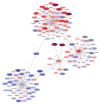Opening Pandora's Box: Mechanisms of Mycobacterium tuberculosis Resuscitation
- PMID: 28911979
- PMCID: PMC5794633
- DOI: 10.1016/j.tim.2017.08.001
Opening Pandora's Box: Mechanisms of Mycobacterium tuberculosis Resuscitation
Abstract
Mycobacterium tuberculosis (Mtb) characteristically causes an asymptomatic infection. While this latent tuberculosis infection (LTBI) is not contagious, reactivation to active tuberculosis disease (TB) causes the patient to become infectious. A vaccine has existed for TB for a century, while drug treatments have been available for over 70 years; despite this, TB remains a major global health crisis. Understanding the factors which allow the bacillus to control responses to host stress and mechanisms leading to latency are critical for persistence. Similarly, molecular switches which respond to reactivation are important. Recently, research in the field has sought to focus on reactivation, employing system-wide approaches and animal models. Here, we describe the current work that has been done to elucidate the mechanisms of reactivation and stop reactivation in its tracks.
Copyright © 2017 Elsevier Ltd. All rights reserved.
Figures



References
Publication types
MeSH terms
Substances
Grants and funding
LinkOut - more resources
Full Text Sources
Other Literature Sources
Medical

